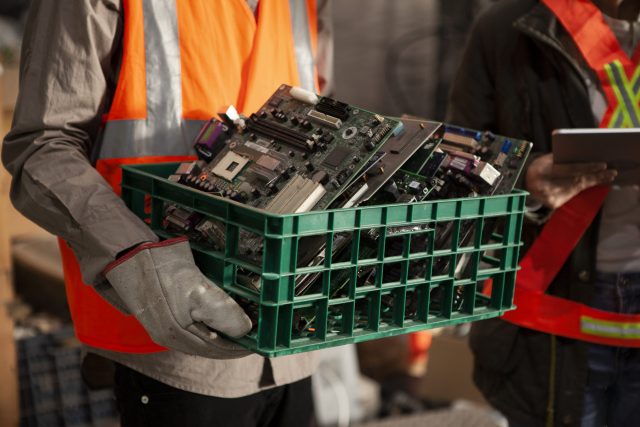India is the largest producer of E-waste after China and the United States and about 95% of India’s E-waste is recycled by the informal sector, which only adds to the problem.
What the government is doing
In May 2022, the Ministry of Environment, Forest and Climate Change (MoEFC) published the E-Waste (Management) Draft Rules that apply to manufacturers, producers, recyclers, and refurbishers. The new draft entails that consumer goods and electronics goods firms have to ensure at least 60% of their E-waste is collected and recycled by 2023 with targets to increase them to 70% and 80% in 2024 and 2025, respectively. Earlier in 2016, the government created the E-Waste Management Rules and applied them across the country to reduce the non-sustainable management of electronic goods’ disposal.
While the rules promote and encourage the establishment of an efficient E-waste collection mechanism, the data shows that the ground reality is very different.
How tech firms are addressing the problem
Sustainability and ESG (Environmental, social, and corporate governance) have become critical components of business strategy and for tech companies, in particular, their sustainability credentials are under scrutiny by their customers because of E-waste and product recyclability.
A good starting point for companies is quantifying and understanding a business’s E-waste stream along with its associated costs. Once this is established, tech companies can map out the best strategies to reduce, reuse or recycle their products. Initiatives such as the Right to Repair can reduce a business’ E-waste by extending the longevity of their products.
Some global tech giants are offering trade-in and recycling programs that are operational in multiple countries, where instead of discarding the old device away, the customer can trade it in for credit toward their next purchase, while the tech firm handles the recycling for free.
Partnerships with recycling organisations and collection programs to facilitate end-of-life management for electronic devices and batteries are also some options that tech companies are exploring.
Marketing solutions such as conditional selling, social media contests rewarding participants who submit photos of themselves properly disposing of E-waste, or incentivizing customers with exchange offers and discounts that facilitate exchanging of old devices for new ones are also some of the measures taken by companies to tackle the impact of E-waste.
Creating a circular economy for electronics through collaboration between the various stakeholders is an important way of addressing this challenge. Many telcos are embracing the circular economy, which means the waste is eliminated, the environmental impact is reduced, and employment is generated. Better collaboration can result from cross-sector solutions, research and development (R&D) partnerships and strengthening commercial viability. Circular economy start-ups often struggle with business development, financing and market access and thus scaling commercially viable business models may be difficult.
Therefore, developing a broader waste management ecosystem is the need of the hour where all stakeholders in the value chain collaborate and think of solutions for the planet. From electronics manufacturers, to businesses and consumers that use these products, and finally recyclers, everyone should be educated about the impact of E-waste, incentivised to dispose of old or damaged electronic goods at the appropriate time, without harming the environment.




